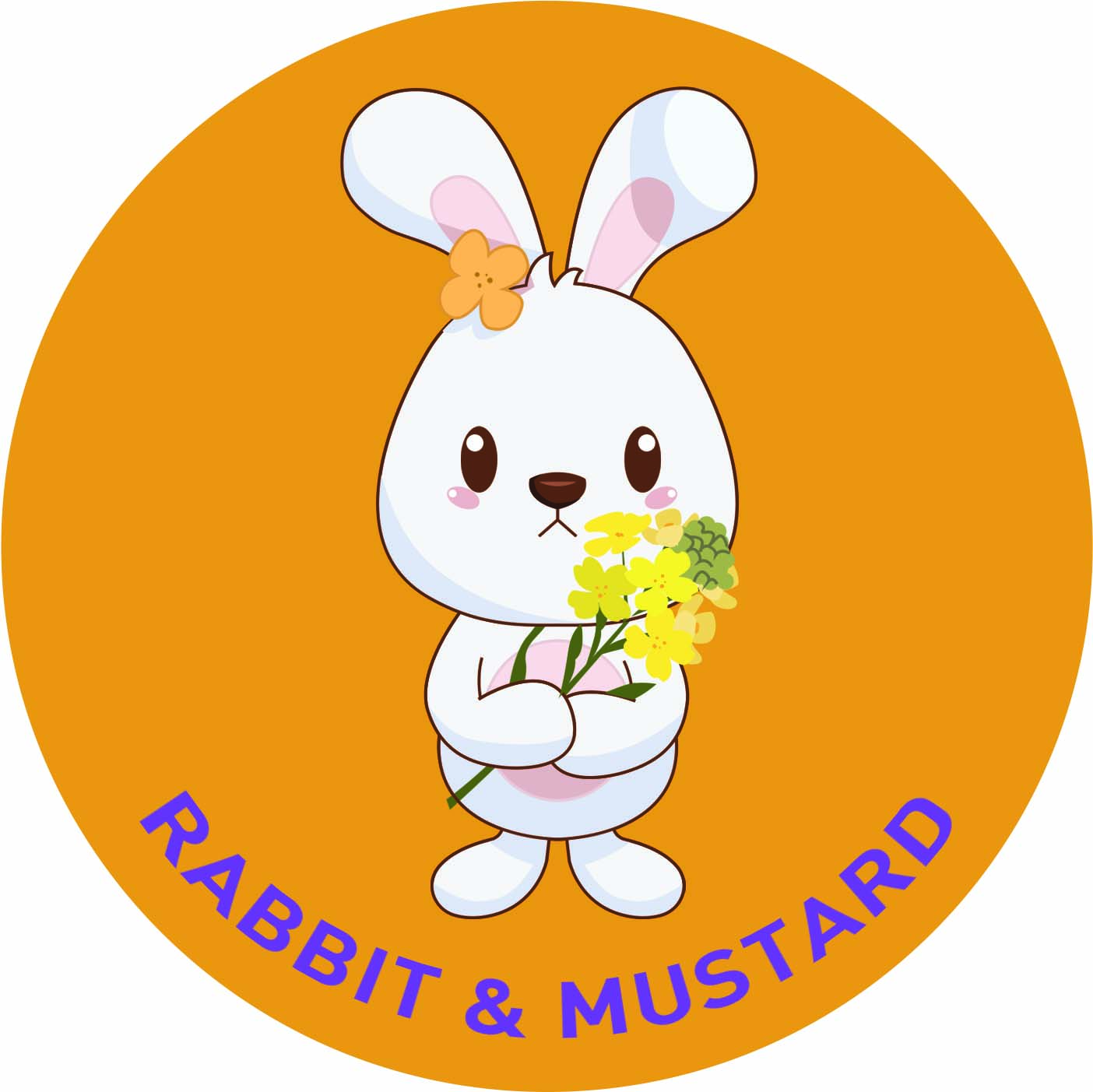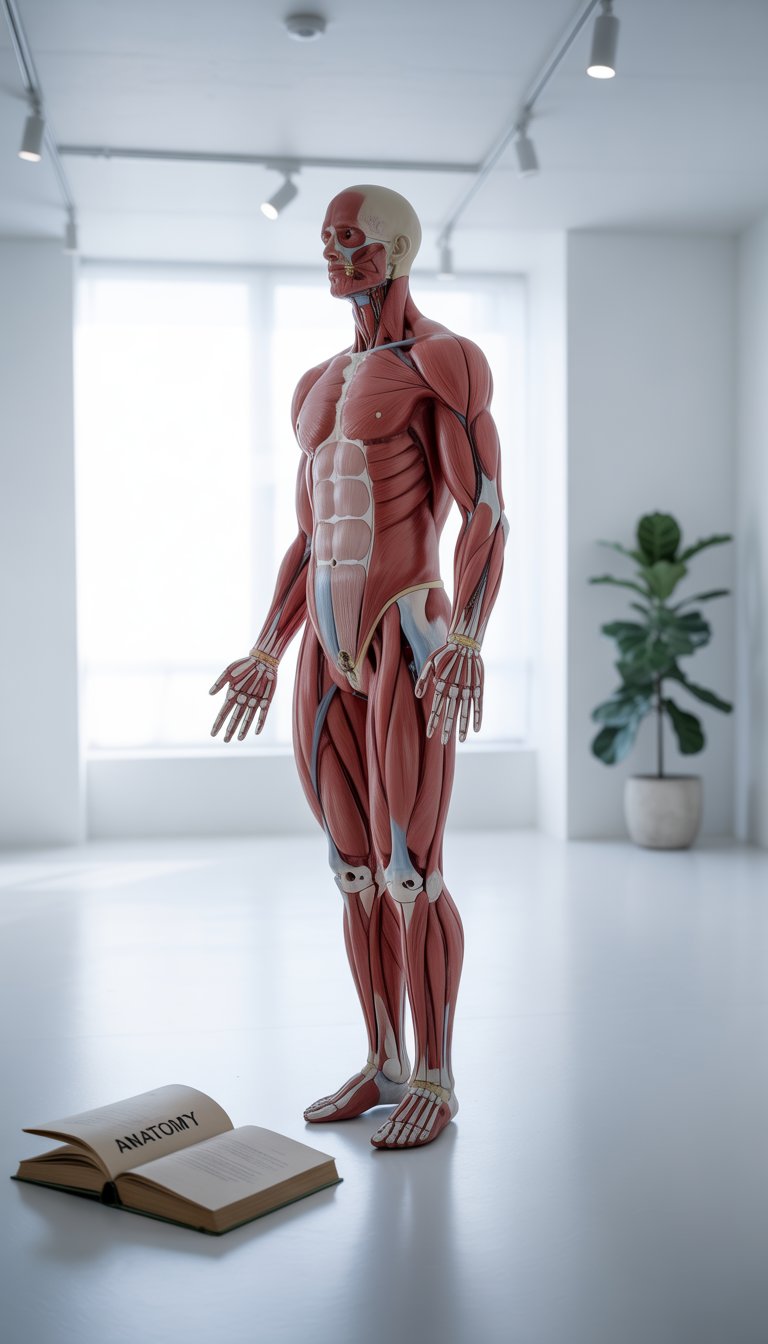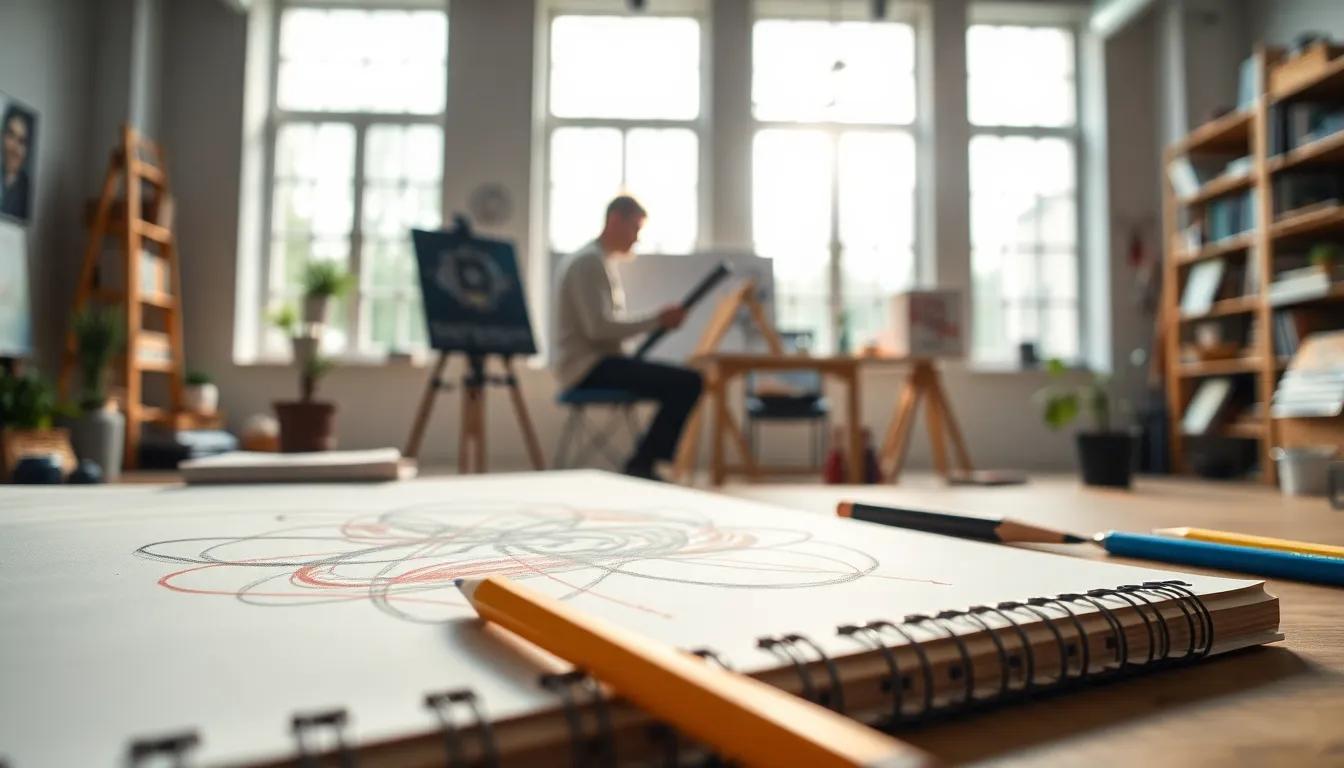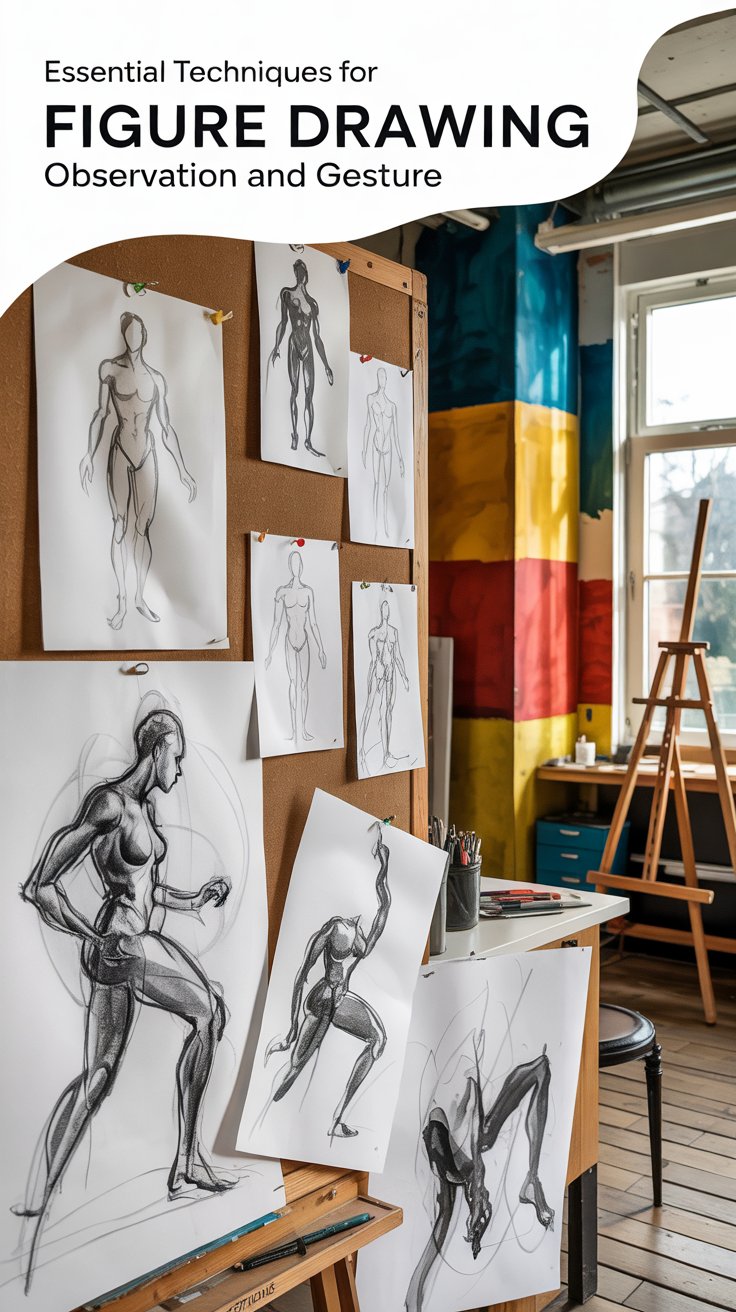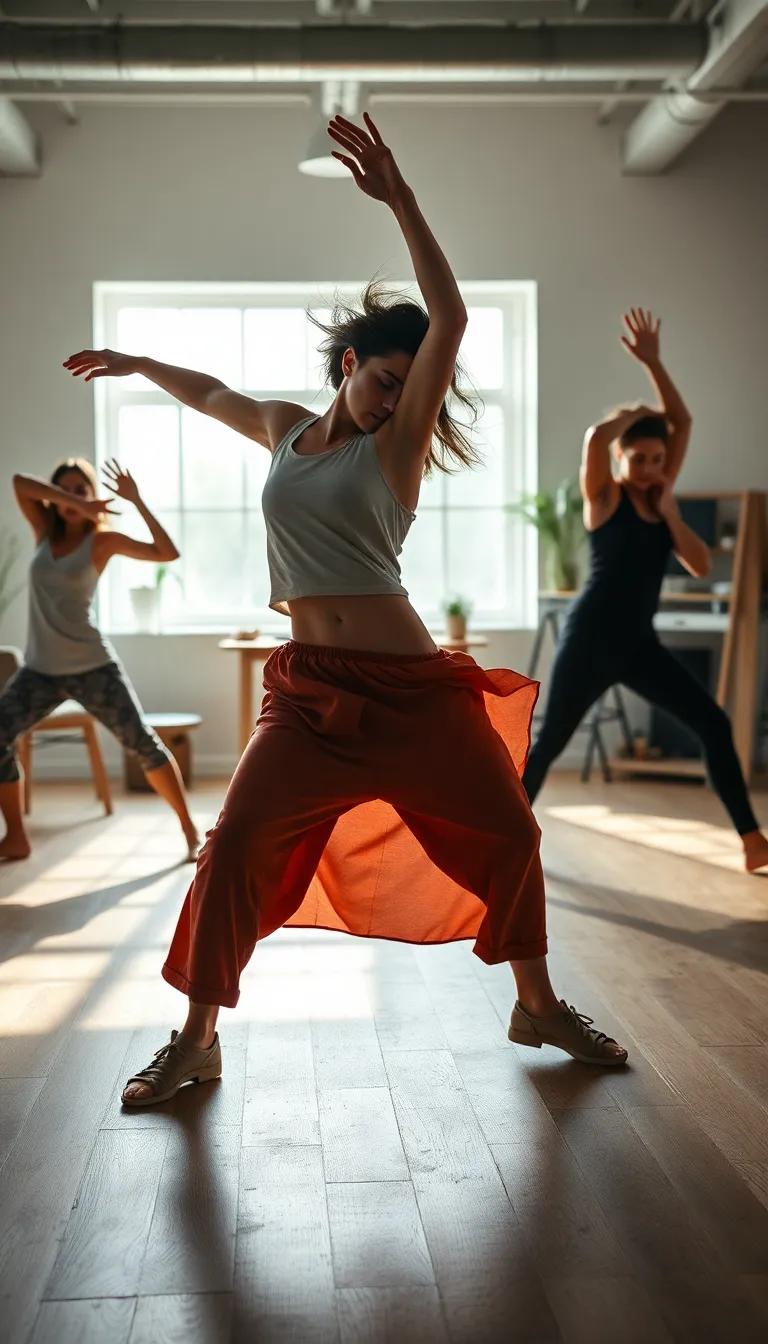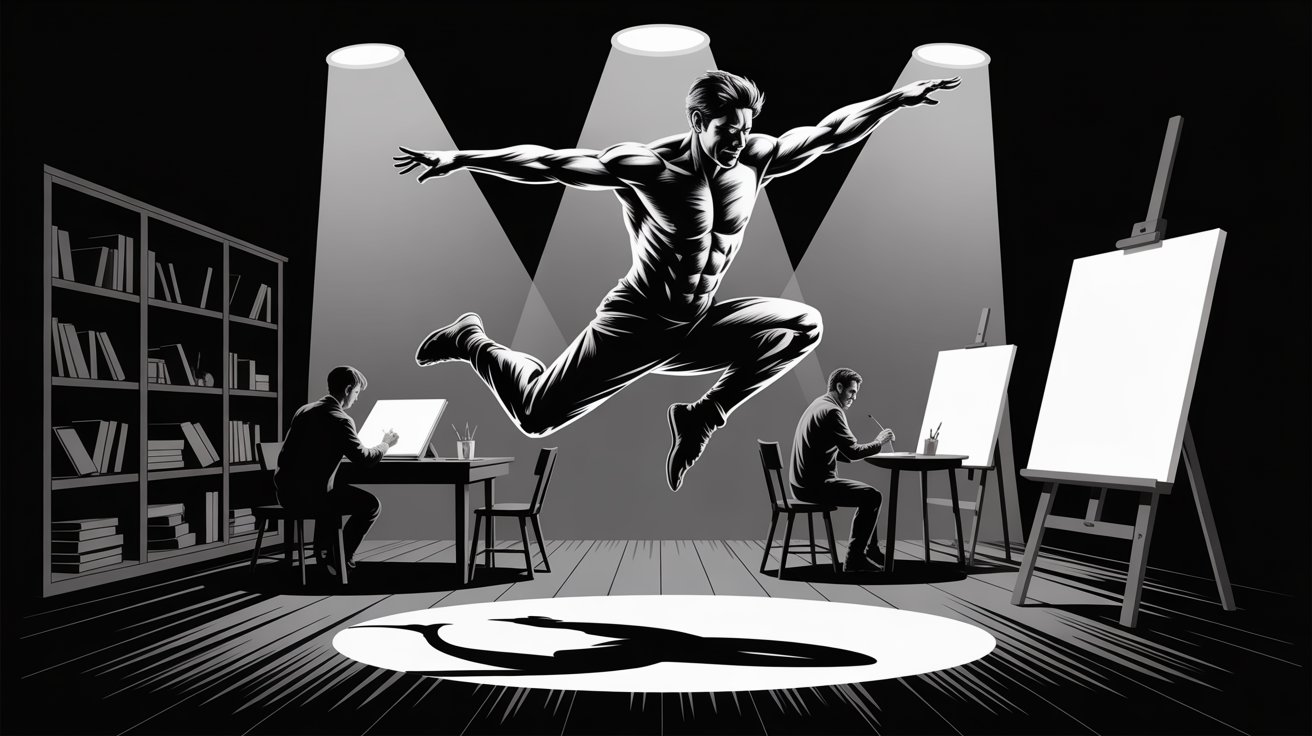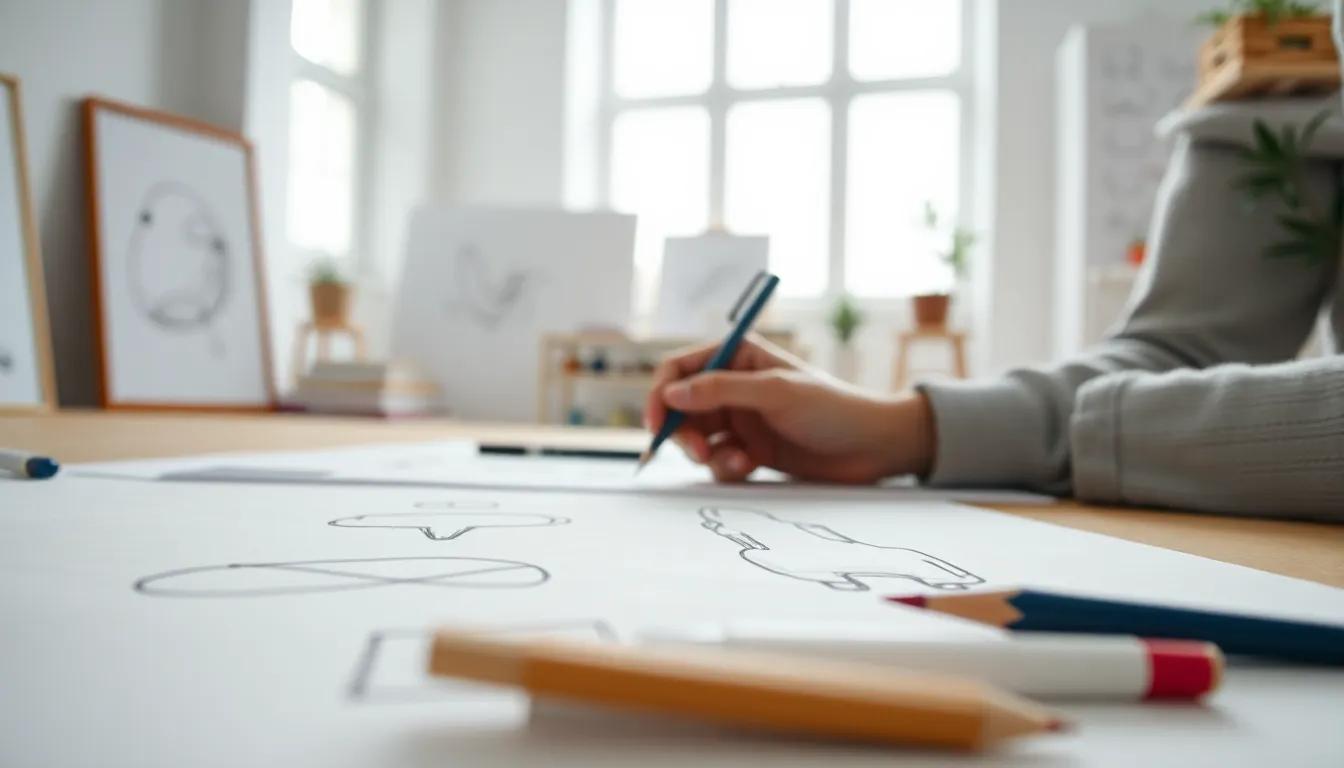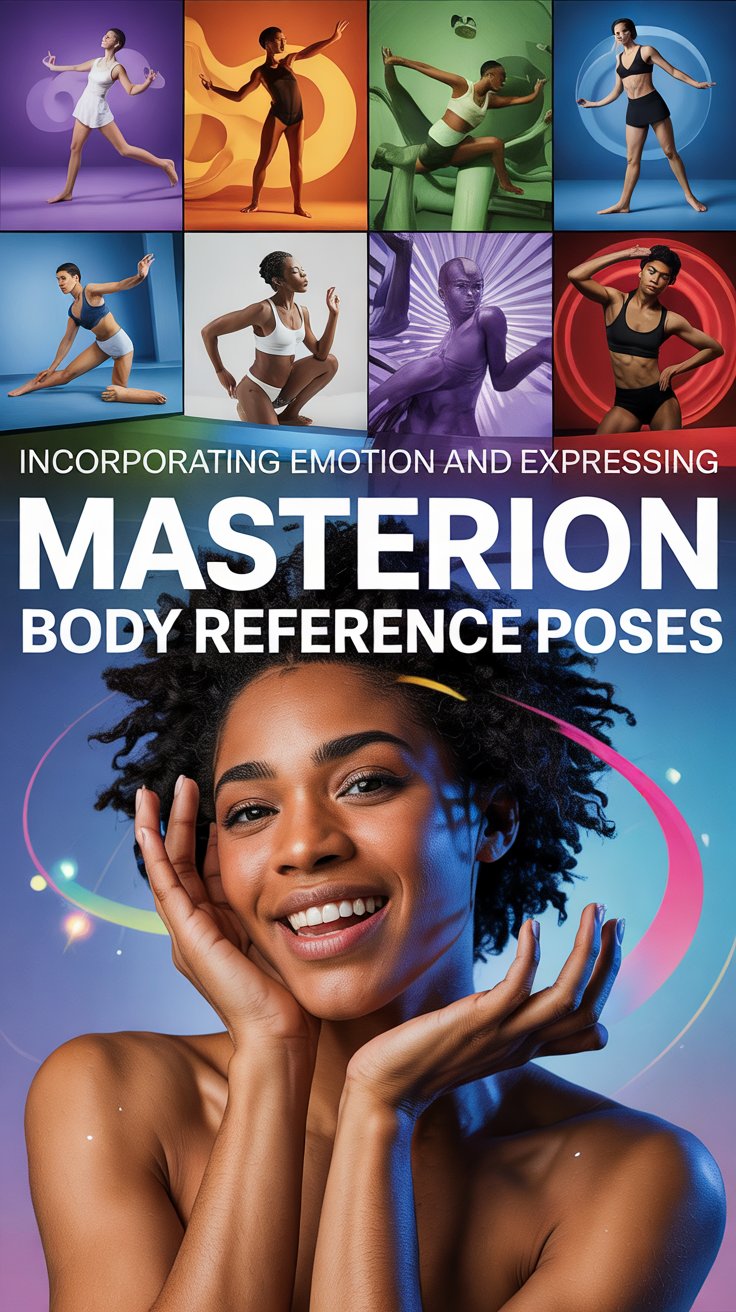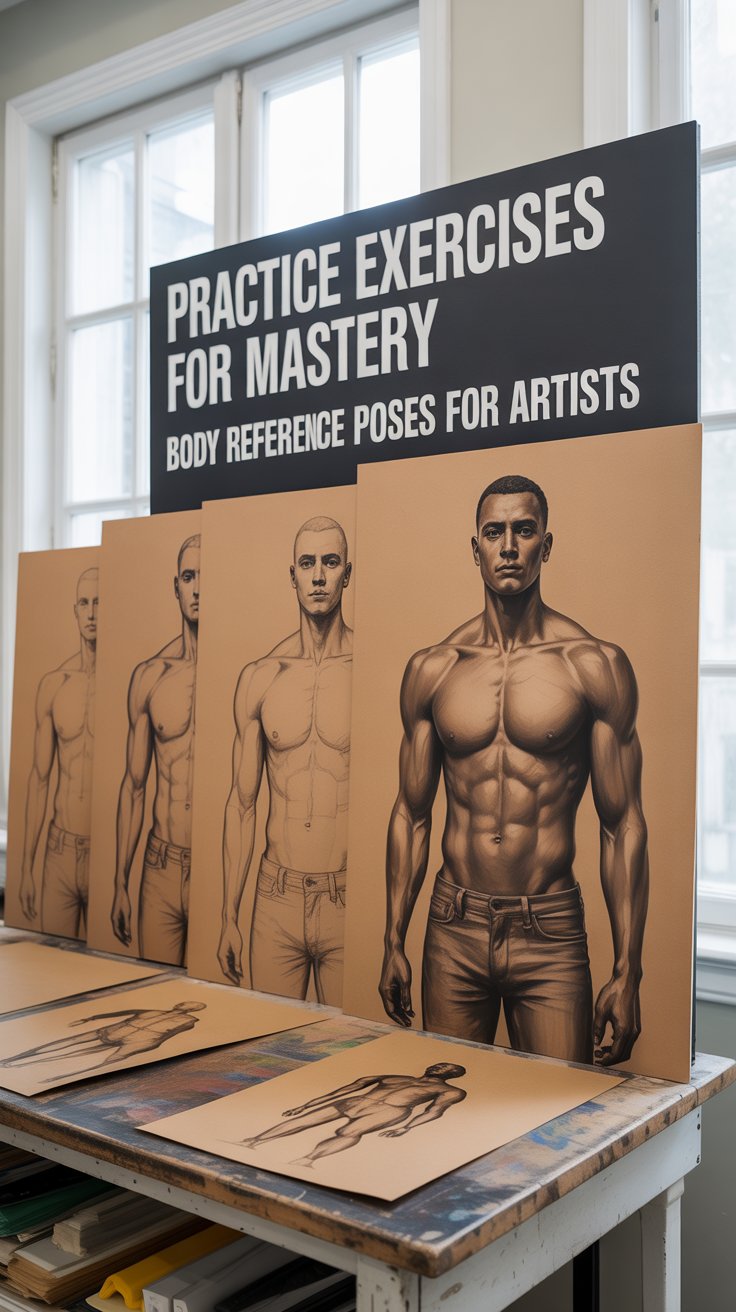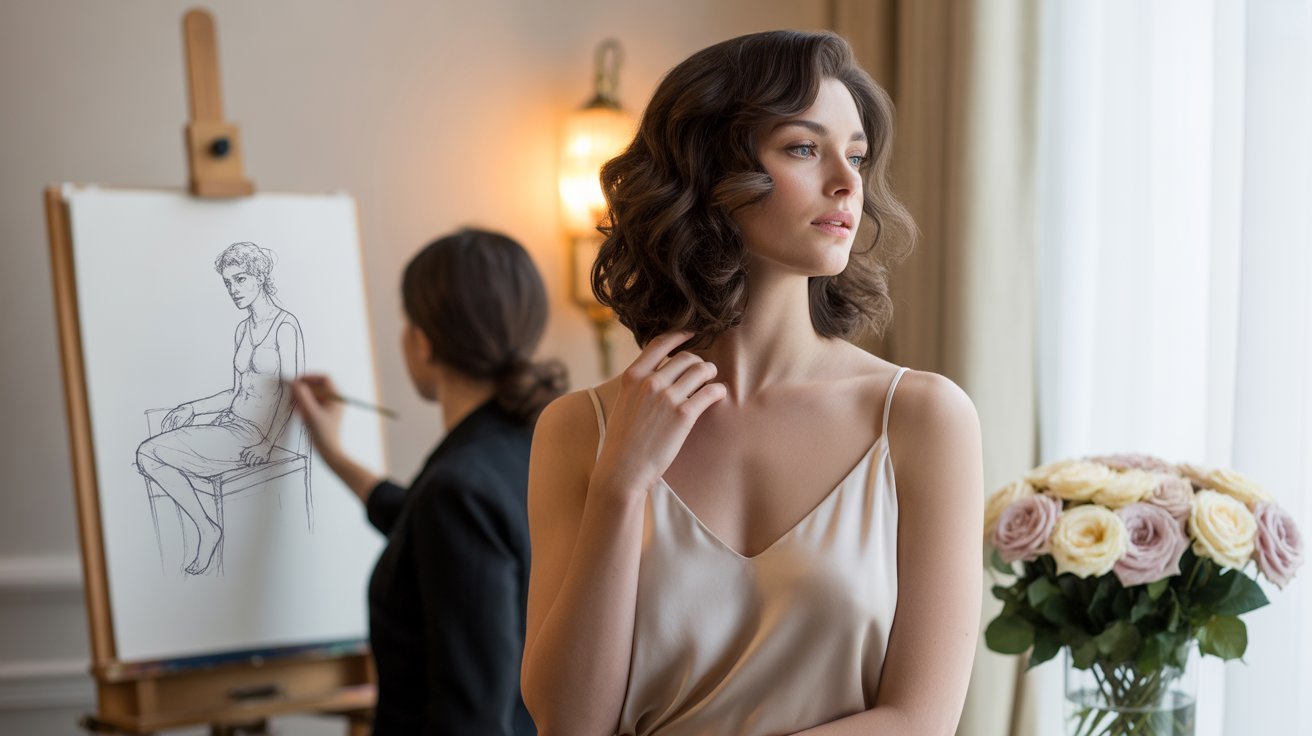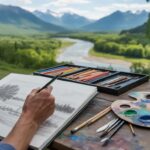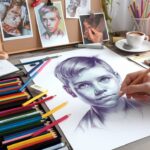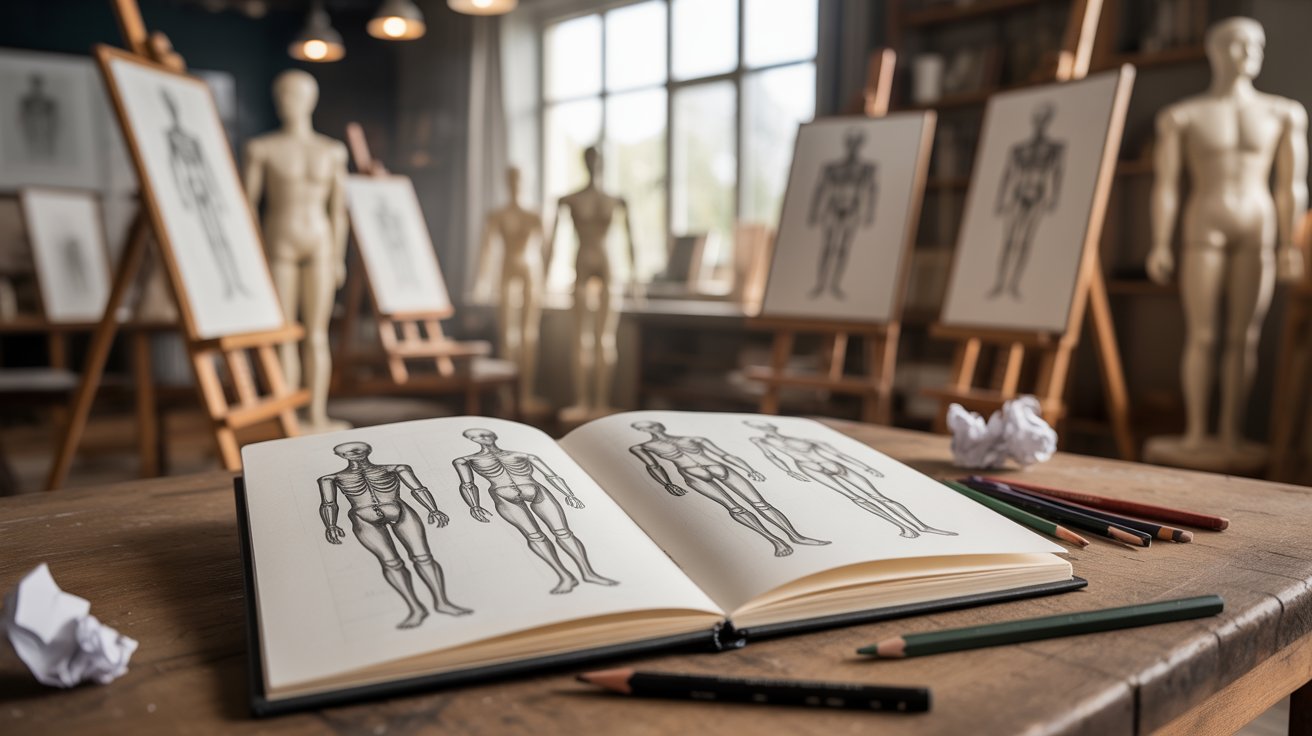
Mastering Body Reference Poses for Artists
Introduction
Artists often encounter challenges when trying to capture the complexity and dynamism of the human form. Body reference poses provide a valuable tool, enabling artists to understand human anatomy and proportions better. This comprehensive guide aims to offer insights into effective body poses to improve drawing and painting skills. From exploring the significance of body proportions to practical exercises for mastery, this article is designed to elevate your artistic endeavors.
Understanding body reference poses is crucial for artists of all skill levels. This guide dives into various aspects, including the fundamental principles of human anatomy, techniques for improving figure drawing, and tips for creating dynamic poses. By the end, readers will possess a deeper grasp of body reference poses and how to apply them creatively in their artwork.
Understanding Human Anatomy
Human anatomy serves as the bedrock of figure drawing, providing artists with the framework needed to depict the human form accurately. Understanding the structure of muscles, bones, and proportions is essential for any artist seeking to create realistic and dynamic representations. Rather than seeing anatomy as a set of dry facts, it can be viewed as a living guide that informs artistic decisions and enhances the overall quality of a piece. By familiarizing themselves with fundamental anatomical principles, artists can bring authenticity and life to their work.
Exploring Body Proportions
Body proportions offer critical insights into how different parts of the body relate to one another. The classic method of proportion often references the “eight-heads” theory, where the human form is divided into sections, each roughly equal to the size of the head. This system not only standardizes measurements but also aids in creating figures that convey balance and harmony. For instance, in traditional representations, the average adult stands about eight heads tall, while children’s proportions are shorter, leading to a significant difference in artistic representation.
Proportions vary between genders and can also be altered for stylistic effects. Understanding the variance in proportions allows artists to manipulate figures creatively. For example, a male figure typically has broader shoulders and narrower hips, while a female figure often presents with a slight curvature at the waist. Recognizing these subtle differences enables artists to accurately portray character and personality through body shapes.
Importance of Anatomy in Artistic Representation
Grasping the essentials of human anatomy is vital for creating convincing poses and actions. Anatomy not only aids in representation but also offers artists a deeper understanding of motion. When an artist comprehends how muscles contract or how weight shifts depending on the pose, they are better equipped to communicate that action convincingly in their artwork.
Studying human anatomy encourages observational skills. Artists are compelled to analyze the body critically, moving beyond surface characteristics to capture the underlying structure that informs posture and movement. As a result, this knowledge fosters a robust artistic practice, allowing for more fluid and naturalistic figure drawings.
Mastering the fundamentals of human anatomy and body proportions sets a solid foundation for any artist. It provides the necessary tools to create figures that are not only accurate but also expressive and dynamic, thereby enriching artistic storytelling through visual representation.
Essential Techniques for Figure Drawing
Artists seeking to enhance their figure drawing skills will find that observation and gesture are fundamental techniques. The ability to accurately perceive the human form is central to creating compelling artwork. Mastering these techniques helps artists not only to render realistic figures but also to convey emotion and movement.
Observation Techniques for Accurate Representation
Observation is a crucial aspect of figure drawing that goes beyond merely looking at a subject; it involves understanding the relationships between different body parts, forms, and angles. One effective method is to practice contour drawing, where the artist focuses on the outline of the figure without lifting the pencil from the paper. This technique encourages artists to remain engaged with the subject, capturing the essence of the form in a fluid manner.
Another technique is to use measuring tools such as a pencil or a stick. Artists can hold their tool at arm’s length and use it to gauge proportions and angles, ensuring that the dimensions of the figure are accurately represented. This practice can be particularly beneficial when drawing from life, where the model’s slight movements can affect the overall composition.
Artists should develop the skill of negative space observation. By focusing on the spaces around the figure rather than the figure itself, artists can gain a greater understanding of form and composition. This shift in focus allows for more accurate depictions of shapes and can enhance the overall balance of the artwork.
Capturing Movement
Gesture drawing is an essential practice for artists aiming to portray dynamic poses. This technique emphasizes the movement and energy of the figure rather than strict anatomical accuracy. Artists typically work quickly, often completing a drawing in under two minutes. This time constraint forces them to concentrate on the essence of the pose, capturing the most significant lines and angles that convey motion.
To practice gesture drawing effectively, artists can use a variety of poses, starting with quick studies of five to ten minutes. These short sessions enable them to explore the full range of human expressions and postures, honing their ability to suggest movement and life. In contrast, longer poses can be used to add detail and refinement after the initial gesture has been established.
Combining observation with gesture drawing techniques allows artists to create more cohesive and compelling figures in their work. By continually practicing these techniques, artists will develop a deeper understanding of body reference poses, enriching their artistic skills and enhancing their ability to depict human figures in motion.
Dynamic Poses and Composition
The Power of Movement in Poses
Dynamic poses breathe life into artwork, capturing the essence of motion and expression. Understanding how the human body moves allows artists to create compelling figures that resonate with viewers. Artistic skill goes beyond mere replication of anatomical accuracy; it requires an understanding of how movement influences the overall composition. When a figure is depicted in action, whether it’s a leap, a twist, or a subtle shift in weight, the artist conveys not just what the body looks like, but how it feels and interacts with the space around it.
To capture dynamic posing, artists should consider the concept of line of action. This invisible line traces the path of movement through the body, serving as a guide for establishing the pose. A strong line of action imbues the figure with energy and directs the viewer’s gaze through the composition. Artists should practice sketching this line first—whether the character is reaching, sprinting, or balancing—to lay a solid foundation.
Balancing Elements Within the Frame
While dynamic poses capture motion, composition organizes these elements within the artwork. The placement of figures in relation to their surroundings enhances storytelling and emotional impact. Artists should consider how the direction of movement relates to the negative spaces created within the composition. Using principles such as the rule of thirds or leading lines can guide the viewer’s eye towards the focal point, enabling a more engaging narrative.
Another key aspect of composition involves the relationship between foreground and background. By juxtaposing dynamic figures against static backdrops, artists can amplify the sense of movement. A running figure set against a blurred landscape illustrates velocity and urgency, reinforcing the action depicted. Here, understanding the balance between dynamic and static elements becomes crucial, as it creates a dialogue between movement and stability.
Mastering dynamic poses and effective compositions enhances artistic skills, allowing for a more expressive and communicative medium. As artists refine these techniques, they cultivate a deeper connection with their works, transforming each piece into a powerful expression of movement and emotion.
Utilizing Reference Materials for Body Reference Poses
Effective Approaches to Reference Materials
In the pursuit of mastering body reference poses, artists can greatly enhance their skills by thoughtfully utilizing reference materials. These materials can encompass a range from photographs and videos to 3D models and live drawing sessions. By engaging with these resources, artists can achieve a deeper understanding of body proportions and movement, vital elements that contribute to dynamic and convincing artwork.
One effective approach is to categorize reference materials based on specific needs. For example, artists can use image banks to find poses that suit particular themes, such as action, relaxation, or complex gestures. By implementing a systematic organization—perhaps by genre or emotional context—artists can easily access relevant reference materials when embarking on new projects.
Photographs, particularly those capturing live models, can serve as excellent tools for understanding the subtleties of anatomy. When studying these images, artists should focus on the angles, shadows, and the way light interacts with the body. A keen observation of these details will reveal nuances that can be translated into their work, enhancing realism and relatability.
Videos also present a compelling addition to reference materials. Time-lapse or slow-motion videos can illustrate how the body moves through space, allowing artists to visualize the flow of motion in a way that static images cannot. Pausing the video at different intervals can aid in capturing key poses and the dynamic transitions between them, further enriching an artist’s repertoire.
Utilizing 3D models can provide an interactive experience, enabling artists to manipulate angles and perspectives that photographs may not afford. This can be particularly beneficial when trying to understand foreshortening or tricky perspectives that challenge traditional two-dimensional representation. Several software applications today allow for the rotation and alteration of these models to better grasp complex poses.
Practitioners should consider participating in life drawing sessions where they can sketch from live models. These sessions not only cultivate an appreciation for the fluidity and essence of movement but also provide direct feedback on their work. Observing and interpreting movement in real-time can significantly sharpen an artist’s skills, rendering their creations more compelling and emotionally resonant.
Incorporating Emotion and Expression
Understanding the Connection Between Body Language and Emotion
Within artistry, body reference poses serve as crucial tools for conveying emotions and narratives. Each pose has the potential to communicate a spectrum of feelings—from joy and serenity to tension and despair. Artists must recognize that the physical form, combined with subtle shifts in posture and facial expressions, can tell powerful stories. When an artist understands how to manipulate these poses, they can bring depth to their work, allowing viewers to connect on a more personal level.
Techniques to Convey Emotion Through Poses
To effectively incorporate emotion and expression into body poses, artists should focus on several key techniques:
- Posture and Angles: The position of the body plays a vital role in expressing emotions. A slumped posture might indicate sadness or defeat, while an upright, open stance can suggest confidence or joy. Understanding how different angles impact the perception of a pose can elevate a piece’s emotional resonance.
- Gestures: Hand movements and facial expressions enhance emotional communication. A clenched fist may convey anger or frustration, while relaxed hands can signify peace. Paying attention to these details helps create a more compelling narrative.
- Spatial Relationships: How a figure interacts with their environment can also showcase emotion. For instance, leaning away from another figure can imply discomfort, whereas embracing suggests intimacy. Mastering these spatial dynamics allows for richer storytelling.
An artist should continually reference life and their observations of human behavior. Watching how people interact in different emotions adds a layer of understanding which can be difficult to replicate from imagination alone. Study moments of vulnerability, joy, or conflict to grasp the subtleties that enrich human expression. The more an artist immerses themselves in life’s emotional landscape, the more profound their artwork will become.
Bridging the gap between body reference poses and emotional expression is vital for artists striving for authenticity. By concentrating on posture, gesture, and environmental interactions, they can convey intricate narratives that resonate deeply with viewers. This mastery opens pathways for exploration, fostering continuous growth in artistic skills.
Practice Exercises for Mastery Body Reference Poses
Refining Your Skills
Refining the ability to capture body reference poses requires a combination of observation, practice, and understanding. One of the most effective methods artists can employ is engaging in practical exercises that hone their skills while developing a keen eye for proportions and movement. Here are several exercises designed to facilitate mastery in drawing body poses.
Start with gesture drawing. This exercise encourages quick sketches that capture the essential essence of a pose within a limited timeframe, typically 30 seconds to two minutes. Focus on fluidity and overall shape rather than intricate details. By doing this repeatedly, artists learn to identify the core dynamics of human figures and express them more instinctively in their artwork.
Consider a study of caricature and exaggeration. This method involves pushing the boundaries of normal body proportions to emphasize character traits and emotions. Artists can create a series of exaggerated poses based on the same figure, experimenting with varying heights and shapes. This not only strengthens understanding of body structure but also encourages creativity in the representation of emotion, building on the previous chapter’s emphasis on narrative.
Life drawing sessions present another opportunity for practice. Finding local workshops or online resources can be beneficial for artists seeking to study live models. Focus on different aspects of the pose: balance, tension, and relaxation. Over time, practicing with real-life models improves the artist’s sense of proportion and helps with rendering figures that look appealing and dynamic on paper.
Implementing timed pose tracking can also be effective. Set up a series of images or photos showcasing various poses, and then set a timer for drawing each pose. Limit yourself to three to five minutes per sketch. This approach reinforces quick decision-making regarding proportions and overall composition, making artists more adept at conveying the liveliness of poses.
Develop a personal reference library. Collect images from diverse sources, including photographs, illustrations, and artwork that showcase a variety of poses and body types. Frequent analysis and copying of these references can significantly enhance an artist’s ability to capture authenticity and diversity in their work.
Engaging in these exercises consistently will lead to a greater understanding of the human form and improve overall artistic capability. As artists incorporate these practices into their routine, they will find themselves growing increasingly comfortable and versatile in translating body reference poses onto the canvas.
Conclusions
Mastering body reference poses is essential for artists who wish to enhance their understanding of human anatomy and improve their drawing skills. This guide explored the significance of body proportions, key techniques for figure drawing, and practical exercises to develop a more dynamic artistic style. By incorporating these principles into your practice, you can build a solid foundation for all future artistic endeavors.
As you continue to explore body reference poses, remember that every artist’s journey is unique. Embrace the learning process and challenge yourself with new styles and techniques. The skills and insights gained through this guide will undoubtedly serve as invaluable resources, empowering you to create compelling and lifelike representations of the human figure in your art.
